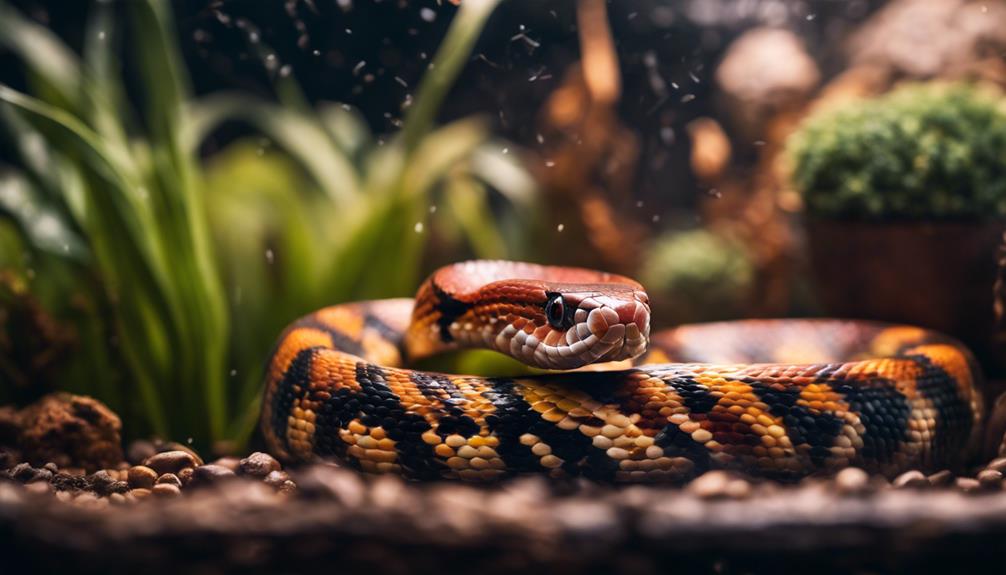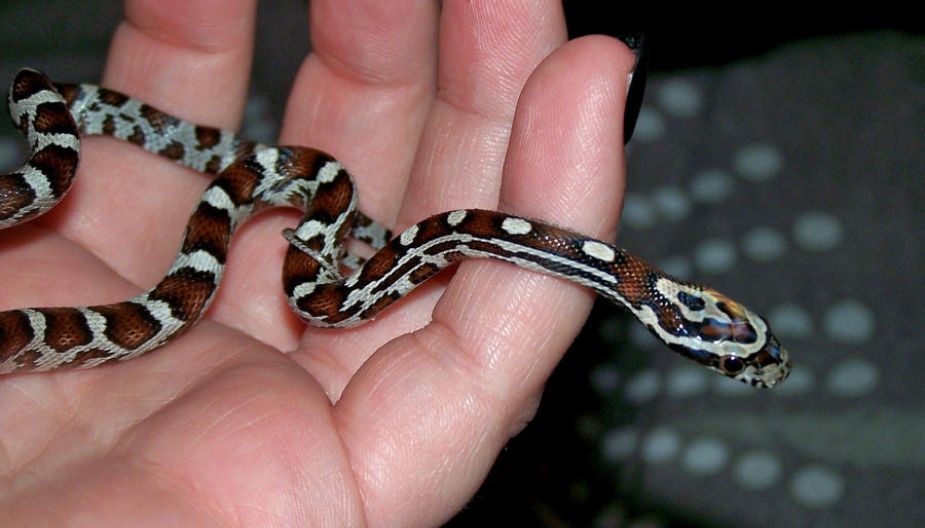Observing the pooping habits of your corn snake can offer crucial clues about its health. This task, although not the most attractive part of pet care, is vital since understanding the normal and abnormal aspects of their feces can be a significant indicator of their overall health condition.
However, it’s not just about the appearance; alterations in their defecation patterns can disclose much about their internal health and might necessitate urgent attention. Therefore, closely monitoring these defecation patterns is essential for the well-being of your corn snake.
Importance of Poop Monitoring
Regularly monitoring your corn snake’s poop is important for evaluating its health and digestive well-being. By keeping a close eye on your snake’s poop, you can quickly spot any changes that may indicate underlying health issues. Pay attention to the color, consistency, and frequency of your snake’s poop as deviations in these aspects can signal potential problems. Monitoring your snake’s poop allows you to track its digestion process and overall well-being effectively.
Changes in poop color, such as redness or blackness, can be a cause for concern and may indicate bleeding or other internal issues. Variations in consistency, like extremely runny or unusually firm stools, could also signify digestive problems that require attention. Additionally, alterations in the frequency of your snake’s bowel movements might point towards issues with its diet or overall health. Regular poop checks are important for ensuring your corn snake’s health and promptly addressing any concerns that arise.
Recognizing Healthy Poop Patterns
Monitoring your corn snake’s poop can provide valuable insights into its digestive health, including recognizing healthy poop patterns that indicate a well-functioning system. Healthy corn snake poop is typically long, tubular, and dark brown to black, often accompanied by white or yellowish urates, which are a normal part of their waste. To make certain your corn snake’s digestive health, observing regular, well-formed, and distinct poop in their enclosure is crucial. Any deviation from these healthy poop patterns, such as abnormal color, consistency, or frequency, might be signs of constipation or other underlying health issues. By maintaining proper feeding schedules, providing access to clean water, maintaining warm temperatures, and regulating humidity levels in the snake’s habitat, you can help promote healthy poop patterns and overall well-being. Below is a table summarizing the characteristics of healthy corn snake poop:
| Characteristic | Description |
|---|---|
| Color | Dark brown to black |
| Shape | Long and tubular |
| Urates | White or yellowish |
Understanding Poop Changes
To understand poop changes in your corn snake, closely observing any variations in color, consistency, or frequency is key to identifying potential health issues promptly. Changes in your corn snake’s poop color can be an indicator of underlying health issues. For instance, abnormal colors like red, green, or yellow should raise a red flag and prompt a veterinary evaluation.
Healthy corn snake poop typically consists of distinct components such as feces, urates, mucous, and urine. Sudden deviations in poop appearance should be monitored closely for any further abnormalities. By monitoring changes in your corn snake’s poop characteristics, you play an essential role in maintaining its health.
Proactive Health Issue Addressing
Observing changes in your corn snake’s pooping patterns can provide valuable insights into its overall health status and help you address potential issues proactively. Regular monitoring of your snake’s poop frequency, color, and consistency is essential in detecting any underlying health problems early on. Any deviations from normal patterns could indicate poop-related issues that require attention. By addressing these concerns promptly, you can prevent more serious health complications in your corn snake.
Consulting a reptile veterinarian for guidance on your snake’s pooping patterns is important for proactive health management. These professionals can offer expert advice on interpreting changes in your snake’s poop and recommend appropriate actions to take. Keeping detailed records of your corn snake’s pooping habits is also beneficial as it allows you to track any potential health concerns over time. By staying vigilant and proactive in monitoring your corn snake’s poop, you can better guarantee its overall well-being and address any health issues promptly.
Tips for Maintaining Healthy Pooping
For ideal digestive health in your corn snake, consider implementing these tips to maintain healthy pooping habits. Corn snakes need proper hydration to aid in digestion and prevent issues like impaction. Make sure to provide a warm water soak and a gentle belly massage to help stimulate healthy pooping. Additionally, maintaining the correct enclosure temperature and humidity levels is essential for promoting regular bowel movements. Offer a varied and balanced diet along with fresh drinking water to prevent constipation in your snake. Keeping a consistent feeding schedule can also help regulate their digestive system. Regularly monitoring and cleaning the enclosure is important to create a clean and comfortable environment for your corn snake, supporting overall health and well-being.
| Tips for Maintaining Healthy Pooping in Corn Snakes | |
|---|---|
| Provide warm water soaks and gentle belly massages | Ensure proper enclosure temperature and humidity levels |
| Offer a varied, balanced diet and fresh drinking water | Monitor and clean the enclosure regularly |
Frequently Asked Questions
What Is a Healthy Corn Snake Poop?
A healthy corn snake poop is typically long, tubular, and brown or black. It may contain white or yellowish urates. Abnormal color or consistency signals potential health issues. Monitoring helps assess health and digestion.
How Do I Know If My Corn Snake Is Healthy?
To know if your corn snake is healthy, observe shedding frequency, feeding habits, activity levels, weight fluctuations, skin condition, behavioral changes, environmental setup, handling techniques, breathing patterns, and overall appearance. These factors provide insight into your snake’s well-being.
How Do I Know My Snake Is About to Poop?
To know when your snake is about to poop, watch for signs like increased activity, exploring the enclosure more, and frequent visits to the warm side. Look for subtle body language changes indicating the need to poop.
How Do I Know if My Corn Snake Is Constipated?
If your corn snake is constipated, observe for dietary changes, hydration levels, and environmental factors. Check for handling stress, digestive issues, and behavioral changes. Confirm proper temperature regulation, physical activity, and consistent poop. Consult a vet promptly if needed.
Conclusion
Keep a keen eye on your corn snake’s poop patterns to guarantee it stays healthy and happy. By monitoring for changes in color and consistency, you can catch potential health issues early.
Remember to provide a balanced diet, proper hydration, and a suitable environment for your snake to thrive. Stay vigilant and proactive in addressing any poop-related concerns to keep your corn snake in top shape.
Happy and healthy pooping for your pet pal!


